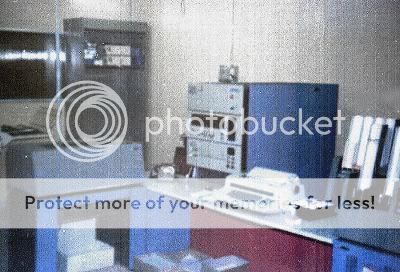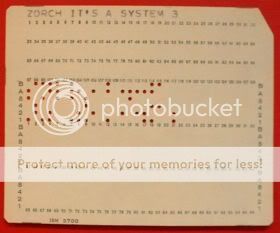The First Mini-Computers in New York
 My first job was in 1976. I started out as a keypunch operator. Keypunch operators worked on off-line, stand- alone machines. They were responsible preparing the data entry information that would be fed into the main computer system. The information was punched on small 90 column cards that could fit in the size of your hand. If the information needed to be put into a certain order, you had to manually run the cards through the card sorter. Sometimes the sorting process took a long time depending on how complicated you wanted the information to be sorted. It could take as long as ten minutes (as long as you didn’t drop the cards !). In later years, information was keyed onto a diskette, and then put into a read slot in the central processing unit.
My first job was in 1976. I started out as a keypunch operator. Keypunch operators worked on off-line, stand- alone machines. They were responsible preparing the data entry information that would be fed into the main computer system. The information was punched on small 90 column cards that could fit in the size of your hand. If the information needed to be put into a certain order, you had to manually run the cards through the card sorter. Sometimes the sorting process took a long time depending on how complicated you wanted the information to be sorted. It could take as long as ten minutes (as long as you didn’t drop the cards !). In later years, information was keyed onto a diskette, and then put into a read slot in the central processing unit.
As time went on, I worked for other companies, mostly in the garment district of New York City. The buildings were old, and the elevators were manually run. But the people in the computer departments were always bright, happy, and educated, and I liked hanging out with them when I took my break. I worked hard, so they helped me learn the computer operations, which I ended up doing on my next job.
The first computer I worked on was the IBM System 3 Model 10. (shown above). I know it doesn’t look like much now, but it was the hottest thing going at the time. This computer was considered a major breakthrough in the field of computer technology. It was considered very successful because it met the computing needs of the small business.
Information was not handled by the public like it is now. Information was coded on sheets from each department, and then given to us to input. For example, the accounting department would give us all their cash disbursements, cash receipts, sales, accounts receivable, accounts payable etc..
All this information would be keypunched onto the cards. The cards would be sorted by date, account numbers,check numbers etc..The programs were written and stored on the hard disks.
The computer operator’s responsiblity was to call the appropriate programs using OCL (operator control language), and feed the information through. Accounting reports were produced for each department as a result of all the information.
Data was stored in six-bit binary decimal code, with three rows of 32 characters each, or 8 bit EBCDIC, with the two extra rows located in the top rows. For “mass” storage, the System 3 used a single platter disk, roughly the size of a large pizza. Initially each platter held 2.5 MB of data. The standard configuration for storage was one or two fixed disks, each in a separate pull-out drawer, which typically held the operating system and program applications.
The programming language used on this system was RPG (report program generator). It was easy to use, and I was self taught in programming, with the assistance of the data processing managers in charge, along with a friend I had in computer school who was also studying electrical engineering at City College of New York.
As years went by, better equipment evolved in the mini computer series. For me, programming was fun and I was very good at it. I later became a Data Processing Manager, heading my own department and staff.
 Actual size of a punched card.
Actual size of a punched card.
|
strongwilledwoman wrote on Jan 25, ’08
I love it, I remember taking a class in high school on the keypunch machines. I wish I would have listened to my teacher at the time when he stated, “this is the wave of the future.” I was a teen in the 60’s and at that time the average girls dream was to grow up and be a mommy, and take care of your man. Gosh we have come a long way in a very short time. Hurray for women’s lib. I actually became a crusader for the creation of food banks, and human rights, so I guess all was not lost.
|
|
lauritasita wrote on Jan 25, ’08
Yep, the wave of the future. I was one of the first women to program these. Most women back then were keypunch operators. This machine was hot for its time. And I mean HOT. It was the perfect solution for a small business, and I was so proud to be part of that. Of course, when the 8 inch diskettes came out, the cards became antiquated. Never dropped any, though, LOL!!!
|

Wow… History. I remember in the past, in the 70s, some computers would fill complete large rooms at the University where I studied. It is incredible how fast technology advances and changes our lives.